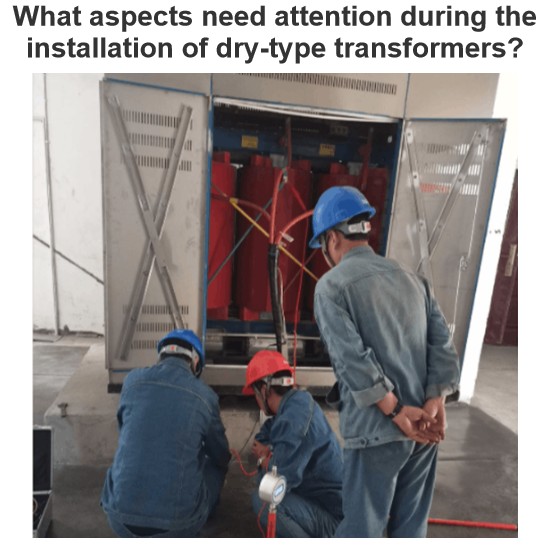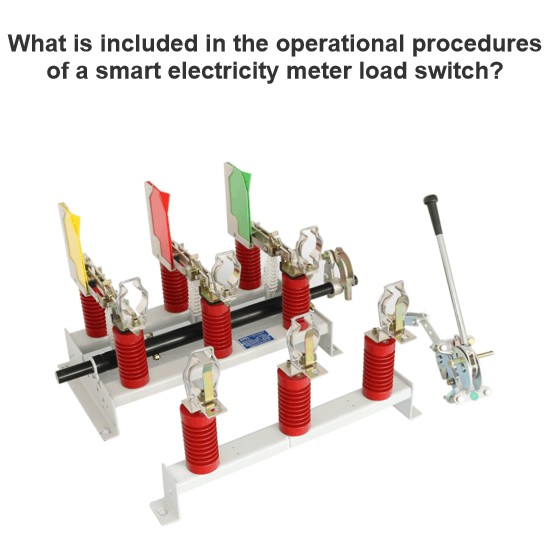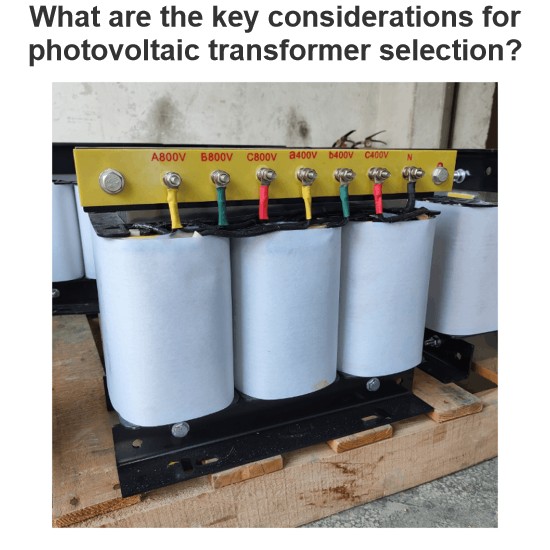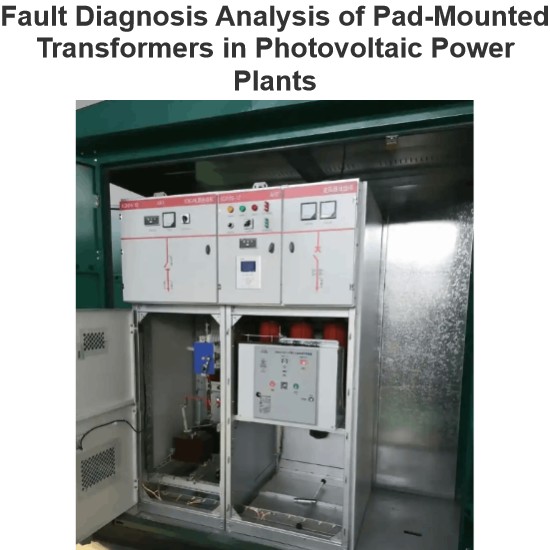1. Introduction
To enhance the quality of power supply services, the power system continuously promotes the reform and upgrading of transformers. As a high - end and advanced equipment, pad - mounted transformers have been increasingly applied in the power system in recent years. Especially in regions like Mexico for projects with a voltage level of 23kV, they play a significant role due to their unique advantages. However, the relatively long installation and construction time has, to a certain extent, restricted their popularization. Therefore, in - depth research on methods to shorten the installation time and improve efficiency is of great significance for promoting the large - scale application of pad - mounted transformers (which need to meet local standards such as NOM certification).
2. Characteristics and Principles of Pad - mounted Transformers
Pad - mounted transformers are characterized by small size, portability, and low noise, with a high level of automation. They adopt a fully sealed and intelligent design concept, allowing for remote setting of operating parameters to precisely control the humidity and temperature inside and outside the tank, ensuring safe operation. In terms of improving power quality, their capacitor banks have a high commissioning rate, which can effectively control the power loss of the power system. The electrical load at the high - voltage end is controlled by a dedicated switch, supporting load - carrying switching. The switch can be closed electrically, facilitating the automatic operation of the distribution network. Moreover, some products have been optimized for seismic design, making them suitable for construction needs in earthquake - prone areas such as Mexico.
3. Problems in the Use of Pad - mounted Transformers
3.1 Environmental and Livelihood Impacts
The layout points of pad - mounted transformers are special, often placed in densely populated areas (such as the center of residential areas, the core areas of building complexes, and both sides of roads). The noise and pollution generated during construction and operation are likely to cause negative impacts on the surrounding environment and residents' lives. Taking the distribution network projects in Mexican cities as an example, if the 23kV pad - mounted transformers cause long - term construction disturbances to residents, it will lead to complaints, so it is necessary to shorten the construction period and reduce the impact.
3.2 Chain Problems in Foundation Construction
The traditional cast - in - place concrete foundation construction requires the excavation of municipal facilities and the stacking of basic materials and electrical equipment, which has a significant impact on the construction site, area, and external traffic, hindering residents' travel and traffic safety. In some cities in Mexico with dense municipal facilities, such construction also requires additional coordination for pipeline relocation, further slowing down the progress.
3.3 Limitations of Construction Methods
The old - style construction has a long cycle from foundation construction to completion (usually 13 days), which limits the scope of use of the equipment and the construction scale, making it difficult to give full play to the advantages of pad - mounted transformers. In the context of the rapid progress of power construction in Mexico, the inefficient construction mode cannot meet the needs of large - scale distribution network upgrading.
3.4 Safety and Cost Hidden Dangers
During the construction of cast - in - place concrete foundations, if the warning signs are unclear or the enclosures are damaged, it is easy to cause safety accidents such as pedestrians being injured or straying into the construction site, increasing construction risks and costs. Mexico has strict supervision over construction safety, and such problems will lead to high penalties and construction delays.
3.5 Difficulties in Transformation and Operation Maintenance
The project of pad - mounted transformers includes capacity - increasing transformation, which requires long - term power outages, affecting residents' electricity consumption and the quality of power supply services. Failures are also likely to occur during later operation maintenance and repair, increasing construction difficulties. Mexico has high requirements for power supply reliability, and the expansion of the power outage range will seriously affect people's livelihoods and commercial activities.To sum up, although pad - mounted transformers have advantages when selected in urban centers (such as in Mexican urban areas), the disadvantages such as long construction periods hinder their promotion. Shortening the installation time has become the key to giving play to their advantages and realizing efficient construction management.
4. Analysis of the Reasons for the Long Installation and Construction Period of Pad - mounted Transformers
The installation of pad - mounted transformers generates noise and dust, interfering with the living environment. The traditional cast - in - place concrete foundation construction involves the excavation of public facilities, occupying space and hindering traffic, with a cycle of 12 - 15 days, which is likely to cause illegal entry of residents and vehicles, increasing risks.
The traditional cast - in - place foundation construction has many procedures. Foundation excavation accounts for 8%, pouring and curing account for 84%, and electrical installation accounts for 8%. Optimizing the foundation form is the core entry point to solve the problem of long installation time. Especially in Mexico, where NOM certification and seismic design requirements need to be met, higher standards are put forward for foundation selection.
5. Strategies for Efficient On - site Installation of Power Pad - mounted Transformers
5.1 Prepare Well Before Installation
To achieve efficient installation, equipment preparation should be done in advance. Inspect the equipment and materials of the pad - mounted transformer. According to the model and capacity (such as the 23kV level), select accessories with low loss, high performance, and suitable for Mexican NOM certification and local needs. Review materials according to new specifications and industry standards, prepare design drawings, and for positions to be accepted (such as areas vulnerable to rainwater erosion), do waterproofing and facility reinforcement in advance according to the drawings, and test the compressed components. Call technical personnel to re - measure the performance of the transformer and its accessories to ensure they meet the design standards, creating conditions for construction. Also, pay attention to the details of seismic design to adapt to local geological conditions.
5.2 Optimize the Foundation Form
The foundations of pad - mounted transformers can be brick - concrete, steel structure, or precast concrete components, each with its own advantages and disadvantages:
5.2.1 Brick - concrete Foundation
It is convenient for construction and operation, but it takes 3 days for curing. It has weak tensile and crack - resistance, high brittleness, and is easily damaged under overload. The wear resistance of rusted components is poor, and it is prone to cracking under large temperature differences. It is difficult to adapt to Mexican 23kV pad - mounted transformer projects that require seismic design and high foundation stability.
5.2.2 Steel Structure Foundation
It is light in weight, can be welded and formed for direct installation, shortening the cycle. However, it has poor water resistance. Its strength and toughness drop sharply under a temperature difference of 300℃, and it is prone to embrittlement and fracture at low temperatures. The cost is high (the cost of the pad - mounted transformer foundation is 20% higher). In the long - term outdoor operation environment (such as the open - air environment in Mexico), it is easily deformed and damaged due to temperature and humidity changes, affecting structural safety. Additional anti - corrosion and seismic strengthening are required, increasing costs and difficulties.
5.2.3 Precast Concrete Foundation
It has significant advantages in Mexican 23kV pad - mounted transformer projects and scenarios requiring NOM certification and seismic design: Factory prefabrication ensures the stability of the structural mechanical properties with small discreteness; the components are pre - formed and delivered to the site, reducing on - site processing time; the quality is excellent, the surface is smooth, meeting the standards of fair - faced concrete decoration, and coordinating with the building; factory production reduces pollution, meeting the requirements of ecological construction. It can also be optimized through seismic design to adapt to earthquake - prone areas.
5.2.4 Determine the Precast Concrete Foundation Scheme
For the construction of pad - mounted transformers, the precast concrete foundation has outstanding advantages, which can shorten the prefabrication time and avoid the disadvantages of on - site pouring. When determining the scheme, refer to the size, weight of the pad - mounted transformer, and the prefabrication requirements of the electrical system for civil engineering (such as the load and seismic parameters of the 23kV level), combine with the practical experience, transportation, and land use conditions of the construction area in Mexico, analyze the feasibility of transporting precast components, estimate the cost and cycle of the overall scheme, and ensure that it meets NOM certification and local construction specifications.
Practice shows that the overall precast concrete foundation (meeting seismic design) can improve construction efficiency, overcome the long time of on - site pouring, effectively control the schedule risks, and has high application value in Mexican power projects.
5.3 Master the Accurate Construction Process
To improve installation efficiency, strict adherence to the process is required: approval, wiring, embedding, and installation. When connecting to the construction site, the enclosures around the pad - mounted substation must meet the engineering and construction - related standards; the equipment acceptance must conform to the construction site (such as in Mexico) and the national grid standards; after completion, test the relay instruments, and if the grounding does not meet the standards, add grounding electrodes and buses to ensure grounding performance.
Before installation, the strength of the precast concrete foundation must reach 70% of the design value. Inspect the transformer and its components for no damage, and do a good job in maintenance and repair; accurately measure and set out, pay attention to key positions, prepare quality control measures and strictly implement them, ensure construction quality, and promote the efficient progress of installation, improving the on - site construction efficiency of pad - mounted transformers (adapting to 23kV, NOM certification, and seismic design).
6. Advantages of Using Precast Concrete Structure Foundations
The precast concrete foundation overcomes the disadvantages such as the stacking of cast - in - place resources and high construction difficulty, reduces construction risks, maintains the cleanliness of the site, and reduces environmental pollution. It is composed of precast components, is low - carbon and environmentally friendly, efficient and fast, shortens the construction period, and meets the requirements of
ecological construction. It is suitable for regions like Mexico with high requirements for environmental protection, construction efficiency, and equipment standards (such as NOM certification and seismic design), facilitating the promotion of pad - mounted transformers.
7. Conclusion
As an advanced equipment, power pad - mounted transformers have broad application prospects in the power systems of regions like Mexico. During installation and construction, on the premise of ensuring quality and functions (adapting to 23kV voltage, meeting NOM certification, and having seismic design), it is necessary to shorten the cycle and improve efficiency. Starting from the optimization of the foundation form, the precast concrete foundation, with its advantages of high efficiency, safety, and high quality, provides support for the large - scale promotion of pad - mounted transformers, promoting the efficient development of power distribution network construction and better adapting to the power needs of different regions (especially regions like Mexico with special standards and geological conditions).















